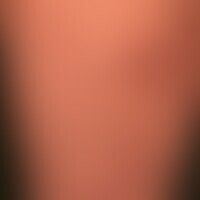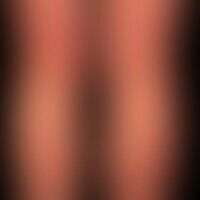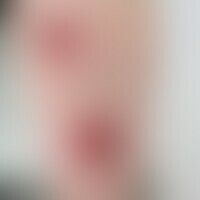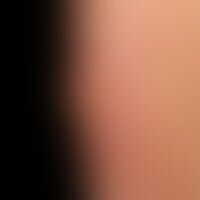Image diagnoses for "Leg/Foot"
395 results with 1158 images
Results forLeg/Foot

Pagetoid reticulosis C84.4
Reticulosis, pagetoid (disseminated type Ketron and Goodman): For several years slowly migrating, partly anular, partly garland-shaped, little itchy, brown-red, only minimally elevated, broadly margined plaques with parchment-like surface.

Acrocyanosis I73.81; R23.0;
Acrocyanosis: Mild acrocyanosis in polyneuropathy. Half and half nails.
The figure was kindly provided by Dr. med. Luther/Essen.

Gaiter ulcer I83.0
Circumferentialulcer covering almost the entire lower leg in chronic venous insufficiency (see initial condition), 6 weeks after split skin coverage.

Sarcoidosis of the skin D86.3
sarcoidosis, plaque form. nodules and plaques that are easily distinguishable from the surrounding area. foci are movable on the support; scaly-crusted surface.

Skabies B86
Scabies: chronic (existing for months) generalized, "eczematous" enormous, especially nightly itchy disease pattern with duct-like configured, rough papules.
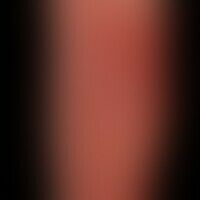
Erysipelas A46
Erysipelas, acute: a sharply defined, flat, rich reddening of the lower leg, accompanied by painful regional lymphadenitis.
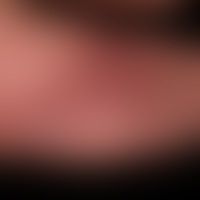
Unilateral naevoid telangiectasia syndrome I78.8
Teleangiectasia syndrome naevoides: A blurred redness of finest telangiectasia on the lower leg and foot of a 44-year-old woman that has existed for many years.
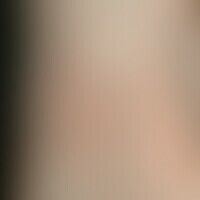
Tinea pedis (overview) B35.30
Tinea pedum. general view: Discrete, well-defined, heart-shaped, slightly scaly hyperkeratosis and erythema on the right foot back of an 80-year-old female patient with exacerbated tinea pedum.

Lichen planus ulcerosus L43.8
Lichen (ruber) planus ulcerosus: extensive infestation of the feet with verrucous and crusty deposits and therapy-resistant deep ulcers with rough edges.

Pityriasis lichenoides chronica L41.1
Pityriasis lichenoides chronica:slightly itchy maculo-papular exanthema which hasbeenpresent for several months; here detailed picture of the lower leg.

Purpura thrombocytopenic M31.1; M69.61(Thrombozytopenie)
Purpura, thrombocytopenic (detailed illustration): fresh haemorrhages are marked by arrows; yellowish haemosiderin deposits are circled and marked by stars.
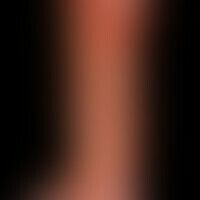
Gaiter ulcer I83.0
Large ulcer of thegaiter, covering almost the entire lower leg, with a circumferential ulcer in chronic venous insufficiency.

Necrobiosis lipoidica L92.1
Necrobiosis lipoidica: confluent, reddish-brownish, reddish-brownish, centrally clearly atrophic plaques that have existed for about 2 years, gradually increasing in size, sharply defined, confluent plaques with conspicuous edges, increase in consistency over the entire plaque.

Venous leg ulcer I83.0
Large circumferentialulcer of the lower leg and back of the foot in a patient with CVI after several split skin transplants.
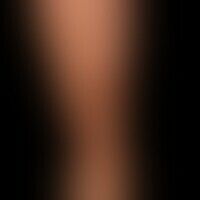
Granuloma anulare disseminatum L92.0
Granuloma anulare disseminatum: non-painful, non-itching, disseminated, large-area plaques that appeared on the trunk and extremities of a 52-year-old patient. No diabetes mellitus. No other systemic diseases known.

Ecchymosis syndrome, painful R23.8
ecchymosis syndrome, painful. intermittent manifestation of painful, demonstrably non-traumatic induced skin bleeding in a 61-year-old woman. initial pressure-sensitive erythema. subsequent development of skin bleeding and slow expansion of the skin changes. chronic recurrent course. no underlying disease known.


